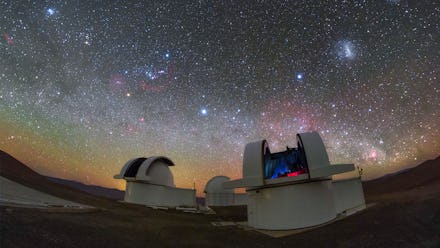Scientists found two new “super-Earth” planets
And one of them just might be able to support life.

The mission to find life outside of Earth often unites humanity. Now, we might be one step closer to (hopefully) making some interstellar connections. Recently, scientists discovered two super-Earth planets, only 100 light-years away. And one of these planets might be able to host life of its own.
On Wednesday, Belgium’s University of Liège published findings that confirmed the existence of LP 890-9b (or TOI-4306b), a planet first identified by NASA’s Transiting Exoplanet Survey Satellite, or TESS.
As lead researcher Laetitia Delrez explained, TESS searches for exoplanets by “monitoring the brightness of thousands of stars simultaneously.” If TESS notices those stars dim at all, it could be caused by a planet passing in front of them. From there, Delrez said, “A follow-up with ground-based telescopes is often necessary to confirm the planetary nature of the detected candidates.” Enter ULiège’s SPECULOOS, telescope which researchers used to find and characterize LP 890-9b.
Being called a super-Earth doesn’t automatically mean that a planet is capable of supporting life. It just refers to exoplanets that are bigger than Earth, but lighter than ice giants like Neptune. LP 890-9b is about 30% larger than our planet — but that’s not all the Belgian researchers discovered.
When looking into LP 890-9b, ULiège researchers also found LP 890-9c, which is nearly 40% larger than Earth. This planet is located pretty close to its sun, “orbiting at a distance about 10 times shorter than that of Mercury around our sun,” said Francisco Pozuelos, co-author of a study that will appear in the journal Astronomy and Astrophysics.
However, LP 890-9c is still in the habitable zone because its sun is almost 6.5 times smaller than ours and about half as hot. Researchers are planning further study into the planet to determine just how habitable it is. But Pozuelos explained that if it has a sufficient atmosphere, LP 890-9c might have liquid water.
As of now, though, researchers say LP 890-9c looks like the second-most favorable among the known potentially habitable terrestrial planets. It’s only beat out by the TRAPPIST-1 planets, which are about 40 light-years away. Overall, Delrez said, LP 890-9c “offers a unique opportunity to better understand and constrain the habitability conditions around the smallest and coolest stars in our solar neighborhood.”